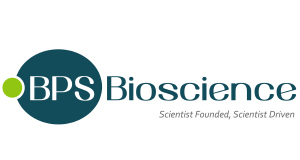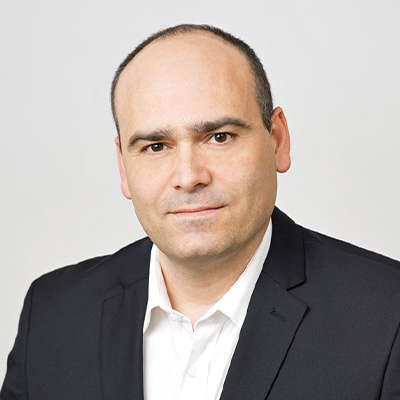NY-ESO-1 (p157-165) B2M HLA-A*02:01 Lentivirus
NY-ESO-1 (p157-165) B2M HLA-A*02:01 Lentivirus
Artikelnummer
BPS82440
Verpackungseinheit
2x 500 µl
Hersteller
BPS Bioscience
Verfügbarkeit:
wird geladen...
Preis wird geladen...
Products from BPS Bioscience require a minimum order value above 400€
Application: Expression of human NY-ESO-1 (p157-165) B2M HLA-A*02:01 in cells of interest.Generate NY-ESO-1 (p157-165) B2M HLA-A*02:01 expressing cell pools or stable cell lines by puromycin selection.
Background: Human Leukocyte Antigen-A (HLA-A) is an MHC-I (major histocompatibility complex) heavy chain receptor, composed of HLA-A and β2-microglobulin (B2M). There are over 200 genes encoding HLA variants and this variability plays a critical role in adaptive immunity. HLA-A*02 is one of the most common class I types. HLA class I are involved in presenting peptides that are typically between 8 to 11 amino acids. HLA-A*02:01 can bind 15-mer peptides, which can then be recognized by T cells. Studies in SCLC (small cell lung cancer) patients has shown that an ATAD2 (ATPase family AAA domain-containing protein 2) immunopeptide can be used in HLA-A*02-01-restricted patients with high reactivity. NY-ESO-1 (New York esophageal squamous cell carcinoma 1, also known as Cancer/testis antigen 1, or CTAG1B), is an important tumorigenic marker present in malignant cells. Normally expressed only in embryonic testis, this highly immunogenic protein is not usually found in normal tissues, but is re-expressed in multiple myeloma, non-small cell lung carcinoma, and breast and ovarian cancer, making it a promising candidate antigen for cancer immunotherapy. Several NY-ESO-1-directed therapies are being developed including cancer vaccines, anti-NY-ESO-1 adoptive cell therapy, alone or in combination with checkpoint inhibitors.
Description: NY-ESO-1 (p157-165) B2M HLA-A*02:01 Lentivirus are replication incompetent, HIV-based, VSV-G pseudotyped lentiviral particles ready to transduce most mammalian cells, including primary and non-dividing cells. These viruses result in the expression of NY-ESO-1 (New York esophageal squamous cell carcinoma 1) peptide 157-165, B2M (beta-2 microglobulin), and HLA (human leukocyte antigen)-A*02:01. The lentiviruses also contain a puromycin selection marker (Figure 1). A B Figure 1. (A) Schematic of the lenti-vector used to generate NY-ESO-1 (p157-165) B2M HLA-A*02:01 Lentivirus. (B) Construct diagram showing components of the NY-ESO-1 (p157-165) B2M HLA-A*02:01.
Formulation: The lentivirus particles were produced in HEK293T cells. They are supplied in medium containing 90% DMEM + 10% FBS. Virus particles can be packaged in custom formulations and produced at higher titers by special request, for an additional fee.
Storage Stability: Lentiviruses are shipped with dry ice. For long-term storage, it is recommended to store the lentiviruses at -80°C for up to 12 months from date of receipt. Avoid repeated freeze-thaw cycles. Titers can drop significantly with each freeze-thaw cycle.
Supplied As: Two vials (500 µl x 2) of lentivirus at a titer ≥107 TU/ml. The titer will vary with each lot; the exact value is provided with each shipment.
Target: B2M, HLA
Uniprot: P61769, P04439
Warnings: BiosafetyThe lentiviruses are produced with a SIN (self-inactivation) lentivector which ensures self-inactivation of the lentiviral construct after transduction and after integration into the genomic DNA of the target cells. of the HIV genes (gag, pol, rev) will be expressed in the transduced cells, as they are expressed from packaging plasmids lacking the packing signal and are not present in the lentivirus particle. Although the pseudotyped lentiviruses are replication-incompetent, they require the use of a Biosafety Level 2 facility. BPS Bioscience recommends following all local federal, state, and institutional regulations and using all appropriate safety precautions.Avoid freeze/thaw cycles.
Biosafety Level: BSL-2
SIN Vector?: Yes
References: Thomas R., et al., 2018 Front. Immunol. 9: 00947.Raza A., et al., 2020 J. of Translational Medicine 140.Kropp KN., et al., 2020 PLOS One 15(9): e0238875.Hassan C., et al., 2014 J Biol Chem 290(5):2593-2603. Yuan L., et al., 2025 eBioMedicine 112: 105515.
Application: Expression of human NY-ESO-1 (p157-165) B2M HLA-A*02:01 in cells of interest.Generate NY-ESO-1 (p157-165) B2M HLA-A*02:01 expressing cell pools or stable cell lines by puromycin selection.
Background: Human Leukocyte Antigen-A (HLA-A) is an MHC-I (major histocompatibility complex) heavy chain receptor, composed of HLA-A and β2-microglobulin (B2M). There are over 200 genes encoding HLA variants and this variability plays a critical role in adaptive immunity. HLA-A*02 is one of the most common class I types. HLA class I are involved in presenting peptides that are typically between 8 to 11 amino acids. HLA-A*02:01 can bind 15-mer peptides, which can then be recognized by T cells. Studies in SCLC (small cell lung cancer) patients has shown that an ATAD2 (ATPase family AAA domain-containing protein 2) immunopeptide can be used in HLA-A*02-01-restricted patients with high reactivity. NY-ESO-1 (New York esophageal squamous cell carcinoma 1, also known as Cancer/testis antigen 1, or CTAG1B), is an important tumorigenic marker present in malignant cells. Normally expressed only in embryonic testis, this highly immunogenic protein is not usually found in normal tissues, but is re-expressed in multiple myeloma, non-small cell lung carcinoma, and breast and ovarian cancer, making it a promising candidate antigen for cancer immunotherapy. Several NY-ESO-1-directed therapies are being developed including cancer vaccines, anti-NY-ESO-1 adoptive cell therapy, alone or in combination with checkpoint inhibitors.
Description: NY-ESO-1 (p157-165) B2M HLA-A*02:01 Lentivirus are replication incompetent, HIV-based, VSV-G pseudotyped lentiviral particles ready to transduce most mammalian cells, including primary and non-dividing cells. These viruses result in the expression of NY-ESO-1 (New York esophageal squamous cell carcinoma 1) peptide 157-165, B2M (beta-2 microglobulin), and HLA (human leukocyte antigen)-A*02:01. The lentiviruses also contain a puromycin selection marker (Figure 1). A B Figure 1. (A) Schematic of the lenti-vector used to generate NY-ESO-1 (p157-165) B2M HLA-A*02:01 Lentivirus. (B) Construct diagram showing components of the NY-ESO-1 (p157-165) B2M HLA-A*02:01.
Formulation: The lentivirus particles were produced in HEK293T cells. They are supplied in medium containing 90% DMEM + 10% FBS. Virus particles can be packaged in custom formulations and produced at higher titers by special request, for an additional fee.
Storage Stability: Lentiviruses are shipped with dry ice. For long-term storage, it is recommended to store the lentiviruses at -80°C for up to 12 months from date of receipt. Avoid repeated freeze-thaw cycles. Titers can drop significantly with each freeze-thaw cycle.
Supplied As: Two vials (500 µl x 2) of lentivirus at a titer ≥107 TU/ml. The titer will vary with each lot; the exact value is provided with each shipment.
Target: B2M, HLA
Uniprot: P61769, P04439
Warnings: BiosafetyThe lentiviruses are produced with a SIN (self-inactivation) lentivector which ensures self-inactivation of the lentiviral construct after transduction and after integration into the genomic DNA of the target cells. of the HIV genes (gag, pol, rev) will be expressed in the transduced cells, as they are expressed from packaging plasmids lacking the packing signal and are not present in the lentivirus particle. Although the pseudotyped lentiviruses are replication-incompetent, they require the use of a Biosafety Level 2 facility. BPS Bioscience recommends following all local federal, state, and institutional regulations and using all appropriate safety precautions.Avoid freeze/thaw cycles.
Biosafety Level: BSL-2
SIN Vector?: Yes
References: Thomas R., et al., 2018 Front. Immunol. 9: 00947.Raza A., et al., 2020 J. of Translational Medicine 140.Kropp KN., et al., 2020 PLOS One 15(9): e0238875.Hassan C., et al., 2014 J Biol Chem 290(5):2593-2603. Yuan L., et al., 2025 eBioMedicine 112: 105515.
| Artikelnummer | BPS82440 |
|---|---|
| Hersteller | BPS Bioscience |
| Hersteller Artikelnummer | 82440 |
| Verpackungseinheit | 2x 500 µl |
| Mengeneinheit | PAK |
| Produktinformation (PDF) | Download |
| MSDS (PDF) |
|

 English
English










